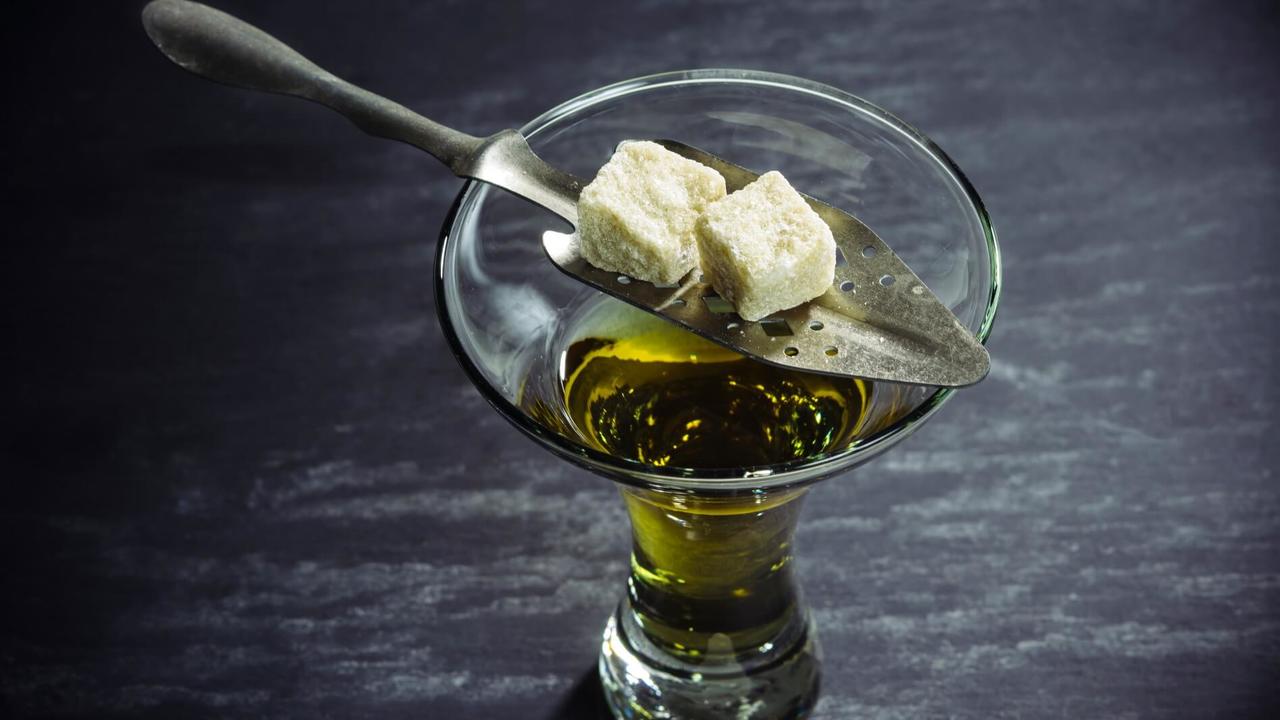It’ll take a little effort to provide a satisfactory answer to that question. However, we promise an interesting story if you’ve got the time!
Absinthe is one of the world’s most notorious spirits–highly alcoholic, very tasty, and oh-so mysterious. Throughout this guide, we’ll cover all of the questions you’re likely to have, including:
- How strong is absinthe?
- Are there really absinthe hallucinations or psychedelic absinthe effects?
- What is the deal with the absinthe spoon?
- What are the most popular absinthe brands?
- What is absinthe made from?
- What are the best absinthe cocktails?
The History of the “Green Fairy”
Absinthe has a long, storied, and even dark history. “The green fairy” (named for its unmistakable color) reputedly spurred visionary artists to new heights of creativity, while at the same time dragging men and women to the lowest depths imaginable (or so we’re told).
Like a traditionally-poured glass of the drink itself, absinthe’s history is a little murky. Interestingly enough, absinthe began life as a medicine.
Wormwood, as well as the wine made from it, has been an herbal treatment since the times of Ancient Greece. The first evidence of a distilled green anise/fennel spirit dates back to the 1700s, hailing from Switzerland. Initially, it wasn’t served alongside ales, whiskies, and other spirits–absinthe was sold as a type of “elixir” for good health.
Absinthe was first introduced to France during the 1840s. Its reputation didn’t take long to cement there; it was beverage du jour for artists like Toulouse Lautrec, expatriate writers like Ernest Hemingway, and countless other “bohemians” in Paris.
Other European countries quickly adopted it due to its strength and relatively inexpensive price-tag (something we wish still existed, frankly).
Baseless “smear campaigns” were set up to malign absinthe and its drinkers as deviants, madmen, and generally debauched monsters. The campaigns worked, though–the United States banned the importation and sale of absinthe in 1915. Most other European countries followed suit, although traditional wormwood absinthe production continued in both Spain and Portugal where the spirit remained legal.
A word about the famous “hallucinations”
The idea of absinthe hallucinations and psychedelic absinthe effects have never been proven in any scientific study.
With strengths between 90-148 proof (45-74 percent alcohol by volume), absinthe is a highly alcoholic drink–more of a concentrate, really: it’s supposed to be diluted with water and sugar (this is where the famous absinthe glass and absinthe spoon come in). The fact is, most people who claimed hallucinations were probably just really, really drunk.
Absinthe Varieties
Absinthe lacks the stringent definitions of say a whiskey, gin, or brandy. However, there are several distinct types that any connoisseur should know.
Blanche/blue absinthe
Blanche, also known as la bleue or simply “blue” is an uncolored spirit; it lacks the chlorophyll and herbal complexity, making it a good choice for those who find traditional absinthes to be a little too strong.
Verte
“Verte” (green) absinthe is simply blanche-style with added coloring. This step lends verte absinthe its signature color and its complex, intense flavor. The absinthe flavoring changes a lot from brand to brand, and many absinthe companies are notoriously secretive about their particular blend of botanicals.
Most of today’s absinthes–even those with wild colourings–fall under the “verte” category, as they contain added coloring and are not bottled after the first distillation.
Distilled Absinthes Vs. Cold-mixed Absinthes: Two Processes, Two Results
Very little has changed about the process of absinthe distillation since the early days. As a matter of fact, its distillation process is remarkably similar to that of a premium gin. Many people misidentify absinthe as a form of liqueur, but unlike liqueurs, it is not bottled with any added sugar.
Distillation
First, botanicals are macerated in alcohol–these can vary wildly between absinthe manufacturers. They’re then re-distilled to remove the bitterness of these herbs. This first distillation doesn’t have the characteristic green color–that is added later. It can however be bottled at this point (representing the blanche-style absinthe).
In traditional absinthe, the green colour is strictly derived from the natural chlorophyll of herbs. This chlorophyll is extracted from the herbs themselves after the second maceration. Natural absinthes that utilize this method of colouration have a greater level of complexity–it’s similar to how tannins provide complexity in aged spirits.
Once the colour has been added, the resulting spirit is diluted with water to produce the desired proof/ABV. Occasionally, the spirit is aged in a settling tank, which is said to improve the flavor.
Cold-mixed absinthe
The cold mix process is less expensive than distillation, and is typically considered inferior by aficionados–much like how a “compound” gin will never reach the peaks of a distilled gin.
It’s a simple process: flavouring agents and coloring (usually artificial) are added to a commercial, grain-based alcohol. This variety is the strongest absinthe available–reaching up to 90% ABV.
Most Popular Absinthe Brands
With the advent of the European Union in the 1990s, the drink became legal again and began enjoying its recent “moment in the sun.”
There are now more than 200 brands available, being produced through a wide range of countries including the Czech Republic, Spain, France, Switzerland, and even Australia.
One of our favorite premium brands to pour in our absinthe glass is Hapsburg Absinthe, which offers a wide, multi-colored range of absinthes.
Pernod is a perennial, budget-friendly favorite, but St. George, Leopold Brothers, Tennyson, and Nouvelle-Orleans give the old-standby a run for its money (the latter makes an excellent Sazerac, one of the truly classic absinthe cocktails).
What’s more, there are absinthes in every colour of the rainbow: there’s red absinthe, (literally) blue absinthe, pink absinthe, even black absinthe, where caramel coloring adds a much darker hue to the chlorophyll-rich green.
Now that we’ve settled the question, “Is absinthe legal in the UK,” let’s get to the fun part: where you can find it, and how to enjoy it.
You’re probably wondering where to buy absinthe. If there’s not a dedicated absinthe bar in your town, featuring a beautiful art nouveau-style absinthe fountain, you can likely still find it in a high-end pub, liquor store, or at the very least, online.
As far as how to enjoy absinthe? Personally, we’re partial to the Sazerac and the classic “water and sugar preparation.” It’s a matter of taste and absinthe–depending on the absinthe percentage, you might even enjoy absinthe shots.

